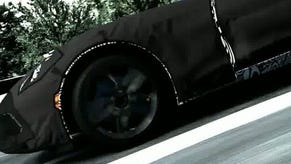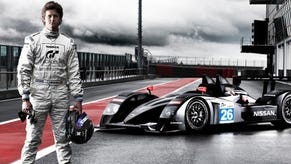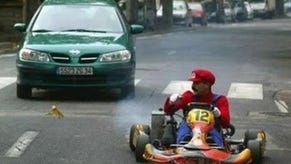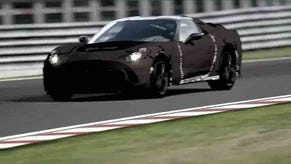Gran Turismo 5
Oh my God, it's full of cars.
You know how GT5 will feel in your hands, too, not least because Sony's controller design hasn't changed much over the years. Once an asset, the Dual Shock is now a handicap to the Polyphony team, and though they continue to coax remarkable rumble feedback out of it, the steering is a touch twitchy and the throttle and brake lack play.
GT5 doesn't control that well on a pad, then, but plug a good force-feedback steering wheel into your PS3 and the game is transformed. This is undoubtedly the best way to experience the phenomenal physical handling model. It doesn't have Forza 3's delicious pliability, but Forza 3 doesn't have its tremendous bite, or its amazing communication of the weight and attitude of your vehicle and the bumps and camber of the road. The range of difficulty settings isn't as wide as others, but you don't need GT5's handling to come to you – you will go to it.
Let's deal with those two old bug-bears next: damage and AI. There is cosmetic deformation of the car models from the biggest impacts, but it's very unconvincing, as if the coachwork was made out of plasticine. You sense Polyphony's heart really isn't in the task of smashing up its beautiful babies.
Worse, the impact physics still have the racers either bouncing off or snagging on each other like toy cars. It's about the audio as much as anything – that hollow thud sounds like you've kicked a cardboard box, not crashed two tons of metal together – but it unsuspends your disbelief at the game's looks in a hurry.
The drivers' AI is much improved, however, with the processional drones of old replaced with conservative but canny pilots who will visibly race each other, make moves to overtake instead of driving blindly into you, and even occasionally run wide or deep into a corner, leaving a tempting opening.
A stranger departure is that Polyphony's rabid completism has overcome its other primary impulse – recreating automobiles down to the tiniest detail. Eight-tenths of the staggering line-up of over 1000 cars are Standard models imported from previous GTs. These cars, available in the used car mart, have been reworked, but still almost look rough – their notched wheel arches, heavily smoked windows and lack of in-car view betray their origins and contrast starkly with the 200 simply unbelievable Premium models in the dealerships.
There's no question which you want more, and the move unbalances the game's roster towards cars from the nineties and early 2000s which will never top your shopping list. 200 of them saved for posterity in glorious Premium detail might have been better, but I guess Yamauchi couldn't bring himself to choose between his children.
He's a great curator, though, and his eye for everything from ultra-rare concepts to historic race cars, tuner specials to iconic workhorses, ensures Gran Turismo remains the only game for the true car enthusiast. The huge number of tracks, too, encompasses racing legends, glamorous cities, rugged nature and Polyphony's signature originals – of which the new Cape Ring, with its sci-fi mountaintop spiral, is a gorgeous, fanciful highlight.
Gran Turismo has a reputation for sterility which it really doesn't deserve. If you know cars and know where to look, there's passion and fantasy and even humour here. And most significantly, there's variety.
This is where GT5 trumps both its predecessors and its rivals. You see, the heart of the game has moved. It's no longer in the GT Mode, despite its improved pace, nor the tuning screen or parts shop. It's certainly not in the vestigial licence tests which are still there but no longer serve much purpose, Polyphony finally having given in and implemented a simple, sensible levelling system to unlock cars and events instead. The game's heart is in those Special Events.
Here you can take part in a wonderfully disparate suite of driving challenges: the rallies (on dirt and snow as well as tarmac), very realistic karting, learning the principles of NASCAR racing with its shuddering 200mph stock cars, racing VW camper vans round the Top Gear test track, piecing the Nürburgring together in section-by-section time trials, and the opulent Grand Tour with its terrifying Tuscan night race in a Lamborghini Murcielago.















